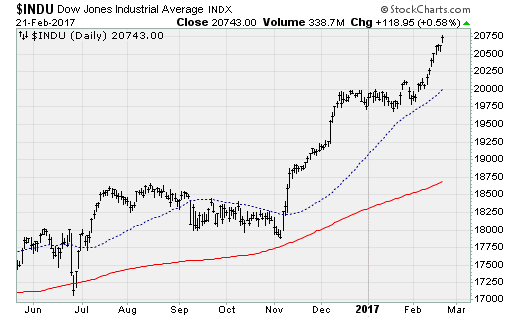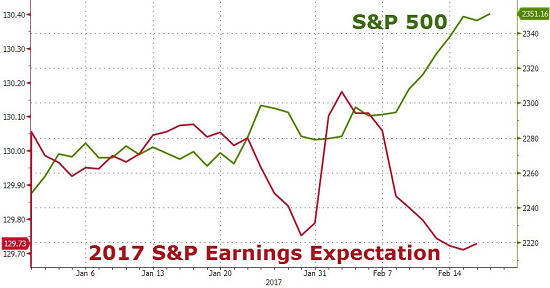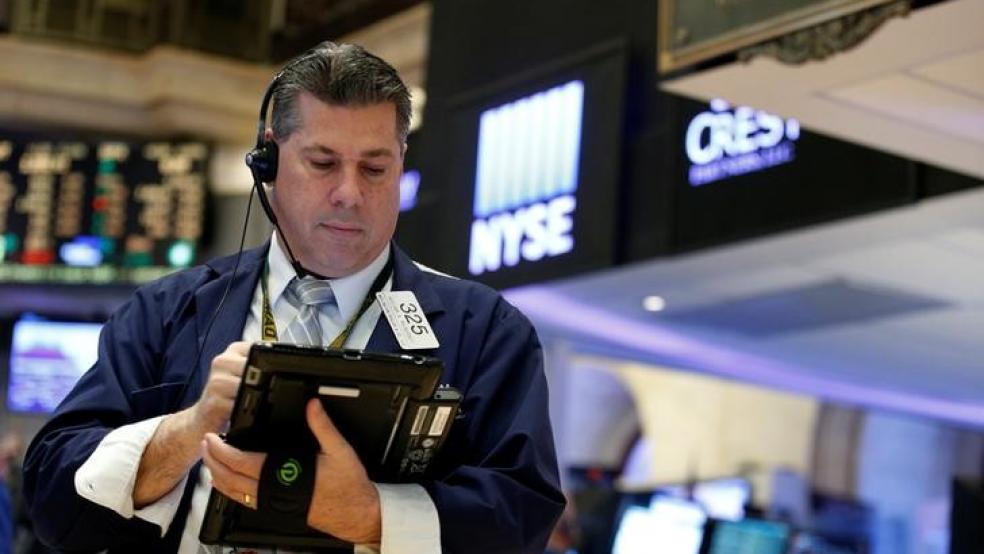For the past two weeks, investors have enjoyed perfection: All four major averages have snagged consecutive new record highs and the S&P 500 has climbed for 12 of the last 14 sessions. Interest rates remain low. Volatility has been quelled, with nearly 90 days elapsed since the last 1 percent decline, as global economic data improves. Earnings growth has rebounded. President Trump is ready to lower taxes.
All of this caps one of the quietest four-year periods in market history and the quietest January of all time. And it comes despite the turmoil in Washington, D.C. as the Trump administration, depending on your political outlook, gets to work in rolling out its agenda amid "fake news" criticism or is demonstrating a frightening incompetency.
Related: Americans Are Having Doubts About Trump’s Agenda
But the market isn’t quite as placid as it seems. There are glitches in the Matrix — bizarre behavior and unexplainable events taking place just beneath the surface — if you know where to look.

Consider, for instance, market breadth — the percentage of stocks rising within the market. It's been narrowing consistently as traders focus on a shrinking list of upward-bounds stocks, ignoring the growing list of laggards.
Jason Goepfert of SentimenTrader notes that the S&P 500's march to new highs has been driven by fewer than 80 companies, less than 16 percent of the index. While that didn't matter when it happened in 1995, the other times it happened (in 1997, 2005, 2010 and July 2016), fresh gains were subsequently wiped out.
Related: The Stock Market Is Sending an Unusual Warning Signal
The focus on rising issues — mainly in the technology and financial sectors — is creating some rare milestones. Consider that technology stocks in the S&P 500 nabbed their 14th straight gain on Tuesday, the longest streak since 1926. Yep, not since the Coolidge administration have "tech" stocks been this hot.
More oddities?
How about that fact the market hasn't suffered a "bad close" so far this year — one in which it ended trading in the bottom 20 percent of its daily range (one of the longest such streaks in history). The breakout of the last few weeks is coming in what is historically supposed to be an underperforming month (especially in the first year of a new president's term).
The recent gains have separated stocks from earnings growth expectations as valuations become stretched (see chart below). All the while, bulls are ignoring not just the political uncertainty —including that surrounding Trump’s tax plan — but also a broad rise in inflation that will up the pressure on the Federal Reserve to raise rates more aggressively. And hedge funds, which are supposed to lean against frothy conditions like this, are now carrying their third-highest market exposure going back to 2003, according to data compiled by Goepfert.

Want more?
Well the narrow buying dynamic isn't limited to just the United States. According to Societe Generale quantitative analyst Andrew Lapthorne, out of the 1,650 stocks in the MSCI World index, only 246 have hit new all-time highs this year. The average stock is still down 26 percent from its high.
Related: Will Trump Restore 4% Growth or Crash the Economy?
Outside of stocks, trading in other assets suggest something is amiss as well. Yields on 10-year Treasuries haven't broken through the 2.5 percent level as one would expect given hawkish testimony from Federal Reserve Chair Janet Yellen and higher-than-expected inflation data. The U.S. dollar has drifted lower despite strong market gains and solid economic data. And crude oil futures remain moribund and rangebound.
Plus, take a look at what's happening to the CBOE Volatility Index (VIX). Known as Wall Street's "Fear Gauge" because of the way it captures the premium on options that protect against market selloffs, the VIX posted an inexplicable 11.5 percent rally, closing over its 50-day moving average last Wednesday for the first time since December and then recapturing that level on Tuesday.
This effectively breaks one of the strong cross-asset relationships in the stock market — akin to suddenly seeing snow on a clear summer's day. One possible explanation is that the unusual and very extended market rally is encouraging hedge fund types to prepare for a selloff.
This episode, while not enough of a catalyst to destabilize the market, reveals just how thin and fragile trading really is right now. Things that shouldn't be happening are. And assets that are supposed to trade a certain way suddenly aren't.
Taken together, it all suggests investors — especially those maintaining their own retirement accounts — should be skeptical and cautious.






